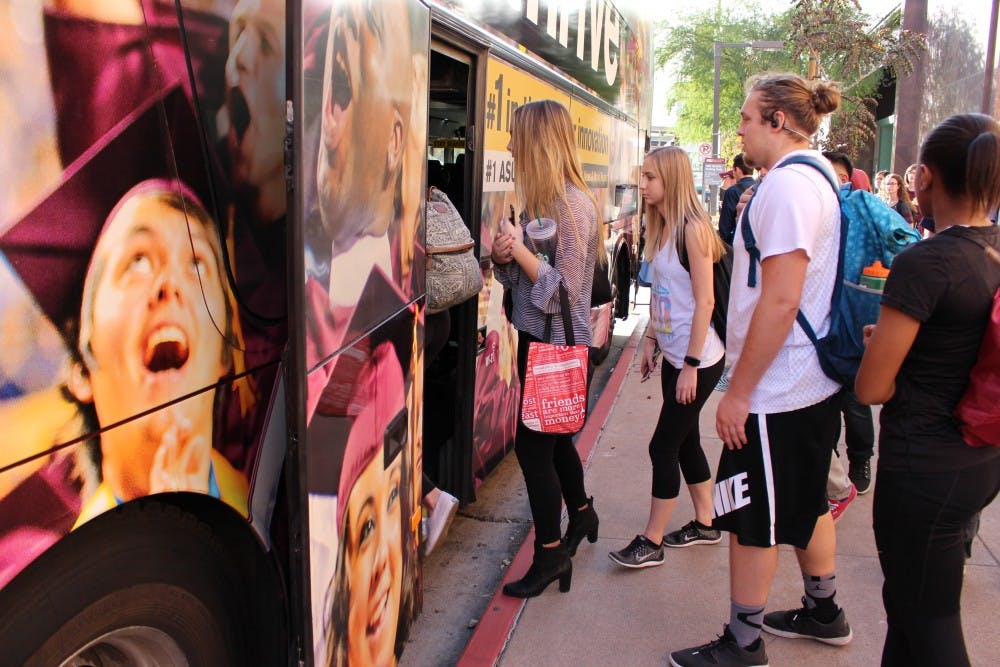Education in college goes beyond the walls of the classroom. College is a time for students to experience the world on their own and make discoveries in new environments.
Students can’t learn certain skill sets in a classroom, such as social or navigational skills. In order to develop those skills and get the most out of their ASU experience, students need to visit all of ASU's Valley campuses and immerse themselves in their surroundings.
“I think that being a student at ASU is more than just going to class. I think it is really (about) taking advantage of the campus services and programs and resources that are available at a public research school like ASU,” Brittany Lewis, communications specialist for the ASU Library, said.
It can be intimidating to venture outside your comfort zone. Downtown Phoenix can be unnerving, but I have seen and learned things that wouldn't have been possible in my hometown of Sedona.
I have seen with my own eyes the reality of economic disparity, true self-expression through art and a community striving to reinvent itself by living on and exploring this campus.
Despite it being nerve-wracking to take this leap into the community, once you do and start learning from your surroundings, you will never want to stop. The best way to take the first step is by using the on-campus resources that promote learning outside the classroom.
“All of these resources are open to all ASU students. Many of them are completely free, there is no cost. (Students) might just have to sign up. They are really easy to access,” Lewis said.
One way ASU connects students with the local communities surrounding its four main campuses is by featuring local community artists and sometimes student artists in exhibits in each campus’s library. Lewis said these exhibits are regularly changed out “to reflect what is going on academically or culturally” in the area.
The ASU Art Museum, which is a part of the Herberger Institute for Design and the Arts, is another great way to experience culture within the comfort zone of campus. The museum aims “to be a meeting point for the exchange of new ideas, perspectives and experiences among artists, students and the public through our exhibitions, residencies, collections and programs,” according to its mission and vision statement.
Students' access to cultural resources, however, does not end when they step off campus.
ASU Libraries take part in the Act One Culture Pass Program, which allows students to check out Culture Passes that grant them and one other person access to a museum or exhibit in the surrounding area. Through this program, students can explore the Arizona Science Center, Desert Botanical Garden, the Challenger Space Center and many more institutes for free.
While these programs exist for students, it's up to students to take advantage of them. The University can create these programs, but it is truly in the students’ hands to venture out in the world and break out of their comfort zones for non-surface level learning to occur.
"I think the challenge is figuring out how to communicate to students and how to capture their attention to make them stop and read what is going on,” Lewis said.
Even though most students confine themselves to only one campus, ASU promotes itself as "one university in many places," and students should branch out to explore each of the other diverse campuses.
The Tempe campus prides itself on multidisciplinary research programs and a rich campus feel, whereas the Downtown Phoenix campus offers “a professional, fast-paced environment."
The West campus has a basis in liberal arts with a 21st-century spin, and the Polytechnic campus emphasizes science and "project-based learning."
In sum, every campus has something different to offer its students. Try taking a class at one of these campuses, checking out the ASU events schedule or even riding an ASU shuttle to explore Tempe, Downtown, Mesa or Glendale. Doing so is necessary for true social and cultural learning in college, and it will benefit you in the long run.
Reach the columnist at afsuthe1@asu.edu or follow @a_sutherland10 on Twitter.
Editor’s note: The opinions presented in this column are the author’s and do not imply any endorsement from The State Press or its editors.
Want to join the conversation? Send an email to opiniondesk.statepress@gmail.com. Keep letters under 300 words and be sure to include your university affiliation. Anonymity will not be granted.
Like The State Press on Facebook and follow @statepress on Twitter.




